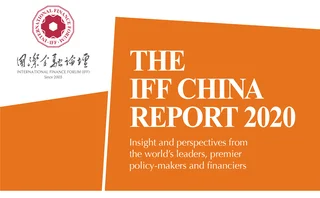
A Swift exit?


Swift is currently the main service provider for cross-border payments, remittances, clearing and settlement. It has a monopoly: if a bank needs to carry out cross-border business, the principal requirement is to access the Swift network, or to find another bank already connected.
Some people criticise the high costs caused by the relatively long cross-border payment process, which comprises several links. The more nodes are passed, the more tolls are collected and, accordingly, the fee is higher. In addition, some believe Swift – which travels through multiple nodes – is not efficient enough. When a problem occurs, it takes more time to check each point of failure. And the firm has also been accused of lacking transparency.

Undoubtedly, Swift has improved its entire payment and settlement system over time through numerous initiatives, including the innovative global payment initiative (GPI). Even so, despite the emergence of new technologies, some have proposed additional improvements to allow Swift to remain the market leader, including changes to the clearing model, improved connectivity and digital currencies.
Changes to the clearing model
The current inter-account clearing model with commercial banks at its centre could be migrated to a blockchain architecture to minimise the number of intermediate links, achieving a peer-to-peer (P2P) payment.
This kind of technology has already been deployed, for example, in Ripple’s P2P network xCurrent, which uses counterparties’ interbank transaction accounts in the clearing network to complete P2P payments. This all occurs at a lower cost and with greater efficiency.
Although the application of blockchain technology itself is currently inefficient, some will explore how to reduce intermediate links to improve payment efficiency.
Improved connectivity
To solve the difficulty of cross-border payment, various countries’ central banks should act together to connect their real-time gross settlement systems: for example, connecting Fedwire and the Clearing House Interbank Payments System from the US, the Clearing House Automated Payment System from
the UK and the Trans-European Automated Real-time Gross Settlement Express Transfer System – known as Target2 – from the European Union with China’s High-Value Payment System in a solution still adhering to the account-based system.
Digital currencies
Of course, cross-border payment also requires foreign exchange policies for the cross-border flow of funds – but technical issues require further discussion. The current major trend is digital currency; the developments of cryptocurrencies and the blockchain technology behind them have led many to question the account-based system, in which they endlessly transfer from one institutional account to another, then to one overseas institutional account, and then to another. Cryptocurrencies have inspired people to solve the problem, which could be completely avoided under certain technical conditions.
The idea of cryptocurrencies was first raised in the late 1970s and early 1980s. When the currency was digitised, the public and private key cryptosystems would be used. By encrypting the message with the sender’s public key and signing with the recipient’s private key, we could figure out the roles of both ends. In this way, transferring digital cash directly from one end to the other would be like sending an email, avoiding going through so many accounts and intermediaries.
Now we have David Chaum’s e-cash system and popular cryptocurrencies such as bitcoin. Blockchain technology will not only work for bitcoin but will also be widely applied in other fields.
The recent introductions of Ripple’s XRP and Facebook’s Libra ‘stablecoin’ are based on this idea: by exchanging your national currency for XRP or Libra, and then exchanging it with the currency of the counterpart country, the cross-border remittance is completed.
The global currency payment system is therefore being drawn in two directions. One is to improve and optimise the original system and maintain the status quo, such as with Swift’s GPI project. The second is to explore new directions, such as constructing a blockchain-based architecture. This has aroused controversy, mainly over whether cryptocurrency should be based on blockchain. For example, David Chaum’s e-cash is not based on blockchain, but it is an academically
successful cryptocurrency.
However, it is still necessary to study and elaborate on the plans to reform payment systems, whether we decide to improve the existing Swift system or to build a brand new architecture, choose centralisation or decentralisation, or have blockchain-based or non-blockchain-based cryptocurrency. Libra has espoused a beautiful vision – to build a world currency without borders and with stable value, and an inclusive economic infrastructure that benefits the public. This appeals to many countries and citizens.
Meanwhile, two other questions have emerged. First, will a global digital currency appear in the digital world? Second, can there be a globally inclusive payment platform that is trusted by everyone and not controlled by a single counterparty? A unified payment platform is easier to achieve than a unified global digital currency, which will find it harder to get a foothold. We should therefore stand in awe of digital currency, but at the same time be encouraged to build an inclusive platform that will evade control by a single party.
Only users who have a paid subscription or are part of a corporate subscription are able to print or copy content.
To access these options, along with all other subscription benefits, please contact info@centralbanking.com or view our subscription options here: subscriptions.centralbanking.com/subscribe
You are currently unable to print this content. Please contact info@centralbanking.com to find out more.
You are currently unable to copy this content. Please contact info@centralbanking.com to find out more.
Copyright Infopro Digital Limited. All rights reserved.
As outlined in our terms and conditions, https://www.infopro-digital.com/terms-and-conditions/subscriptions/ (point 2.4), printing is limited to a single copy.
If you would like to purchase additional rights please email info@centralbanking.com test test test
Copyright Infopro Digital Limited. All rights reserved.
You may share this content using our article tools. As outlined in our terms and conditions, https://www.infopro-digital.com/terms-and-conditions/subscriptions/ (clause 2.4), an Authorised User may only make one copy of the materials for their own personal use. You must also comply with the restrictions in clause 2.5.
If you would like to purchase additional rights please email info@centralbanking.com test test test







